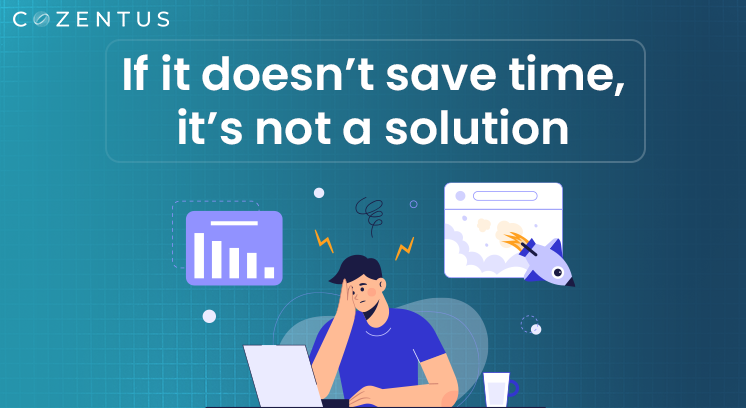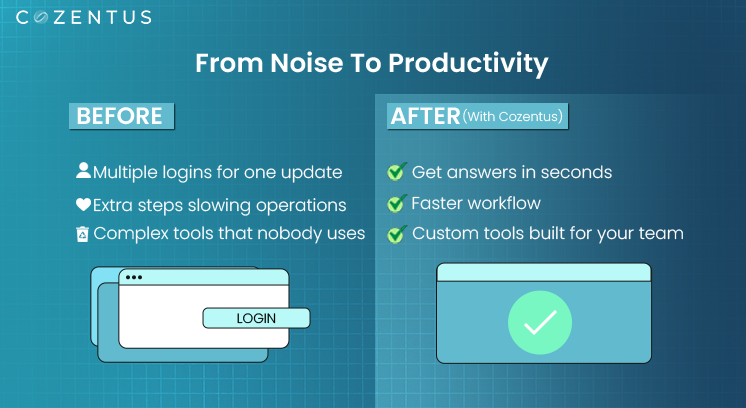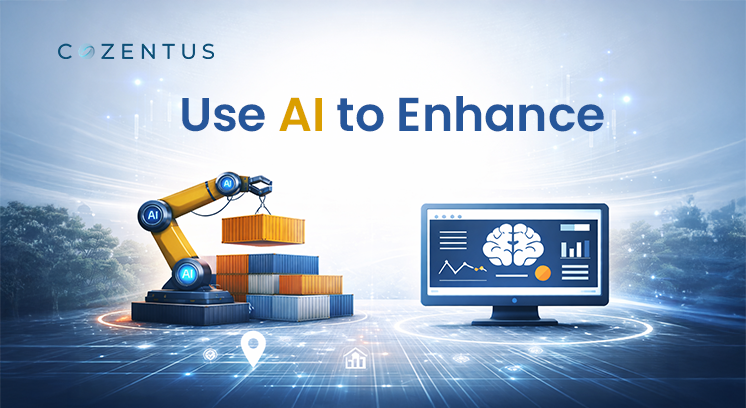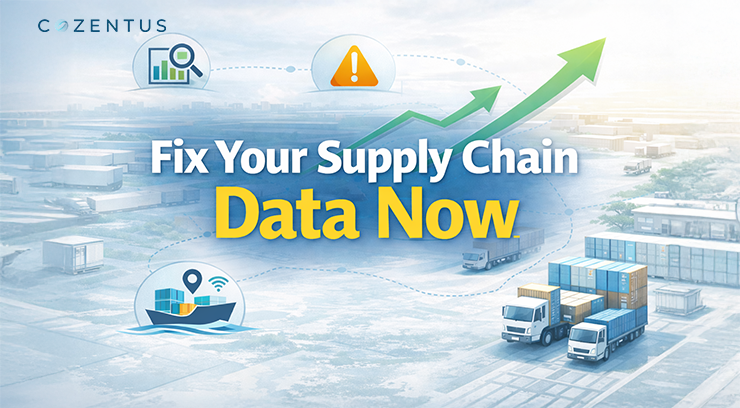Don’t Call It a Solution If It Creates More Problems
If a tool, system, dashboard, or platform doesn’t help you do your job better (by reducing steps or reducing stress), it’s just noise. Distraction. Digital clutter. And you don’t need more of that.
We know this may sound blunt. But we’ve been in the rooms where platforms pitched are loaded with features no one asked for. This is again followed by a training session that feels like it needs its own training.
We’ve also been in the rooms where teams are just trying to get things done, and the very systems meant to support them are slowing them down.
So, let’s talk about it.

Too Many Tools. Too Little Impact.
Every company we work with has one thing in common: they’re already using some kind of tech. ERPs, CRMs, TMSs, WMSs, planning suites, and layers of reporting platforms.
But here’s the truth: just because you have the system doesn’t mean it’s helping.
We hear the same things from operations, finance, procurement, logistics, and customer service teams:
- “We have the data, but it takes too long to get answers.”
- “I need four different logins to get a basic update.”
- “This tool was supposed to simplify, but it added more steps.”
- “Everyone uses it differently, so nothing is aligned.”
- “We’re constantly fighting it - there's no time for strategy.”
Sound familiar? That’s because these systems were built to be everything to everyone. And in doing so, they forgot to be truly useful, especially to you.
The Real Test: Does It Reduce Steps or Stress?
Here’s the simplest litmus test for any system:
“Does it make your job easier? Does it make the process faster? Does it lower stress?”
If the answer is no, it’s not a solution. It’s just software.
We’re not here to throw shade at tech. We love tech. We build with it. But we believe in tools that work for people, not the other way around. Fancy features that aren’t used? Just noise. Dashboards that look impressive but don’t drive action? Just decoration.
What you need is clarity. Control. Confidence.
And for that, your systems must work quietly in the background, surfacing the right information, at the right time, in the way you work.
Why “Feature-Rich” Often Means “Poor-UX”
Let’s address the elephant in the room: enterprise software loves to sell features.
AI-powered, cloud-enabled, fully integrated, real-time dashboards, configurable modules, predictive analytics - the list goes on.
But more features don’t mean more value.
In fact, every additional feature can become another thing your team has to learn, manage, or troubleshoot. Especially when it’s not mapped to an actual day-to-day workflow.
We’ve seen frontline teams build spreadsheets outside the system, because it’s faster. We’ve seen leaders building separate reports because they don’t trust the dashboard. That’s a failure. Not of the people - but of the system.
Your People Are Already Smart. The System Should Be Simple.
The biggest myth in enterprise IT is that, more complex the tool, the more sophisticated.
The best systems are often invisible. They fade into the background and let your people shine.
We’ve worked with teams where:
- The visibility platform gives 20+ filter options - but no way to get a simple ETA.
- The automation engine does 30 things - but not the one step that matters to the ops team.
- The alerts trigger constantly - but no one knows which ones to trust.
So, what happens? People stop using the tool. And go back to calls, chats, and late-night emails.
Here’s what we think: Technology should support how your teams already work, not force them to work differently.
If your operations team is managing by exception, the tool should highlight exceptions, not everything.
If your finance team needs approvals, the tool should reduce bottlenecks—not create more forms.
This Isn’t Just About UX. It’s About ROI.
This isn’t a design problem. It’s a business problem.
When systems are overloaded and hard to use:
- Productivity drops.
- Mistakes increase.
- Morale sinks.
- Adoption fails.
- You don’t get the ROI you expected.
You didn’t invest in technology just to say you have it. You invested to drive outcomes. Faster cycles. Fewer errors. Smarter decisions. Lower costs. Better service.
If that’s not happening, it’s time to ask: “Is the system helping, or just adding noise?”

What We Do at Cozentus
At Cozentus, we don’t approach you with a tool or product. We walk in with a question: “What are your teams trying to do and how can we make it easier for them to succeed?”
Our approach is grounded in three simple ideas:
- Empathy Over Interface: We mainly listen to the clients and users. Not just the sponsors. Because they’re the real heroes, ones who will make or break adoption.
- Less is More: We build and customize tools that remove noise, reduce steps, and offer only what’s necessary. No fluff. No filler.
- Outcomes Over Optics: We don’t directly sell dashboards. We deliver results. You’ll feel the impact in faster responses, accessible data, and better visibility.
And we measure success by a very real business metric: Did your business get easier?
Final Thought: You Deserve Better
Here’s what no vendor ever says: If a tool doesn’t reduce effort or improve outcomes, you’re right to question it.
- You don’t have to accept a digital transformation that is more complex than ever.
- You don’t have to train your smartest people to work around difficult systems.
- You don’t have to feel like you’re constantly learning with no results.
You deserve solutions that work quietly, solve problems, and let your team focus on what matters more.
That’s what we believe. That’s what we build.
With Cozentus:
- No digital noise.
- No extra layers.
- No useless features.
Just quiet, effective support - designed around your workflows.
Let’s remove the noise and make things simple again. Let’s talk this through.
Recent Post
Subscribe to our newsletter
Stay updated on latest trends and news in the supply chain and logistics industry








